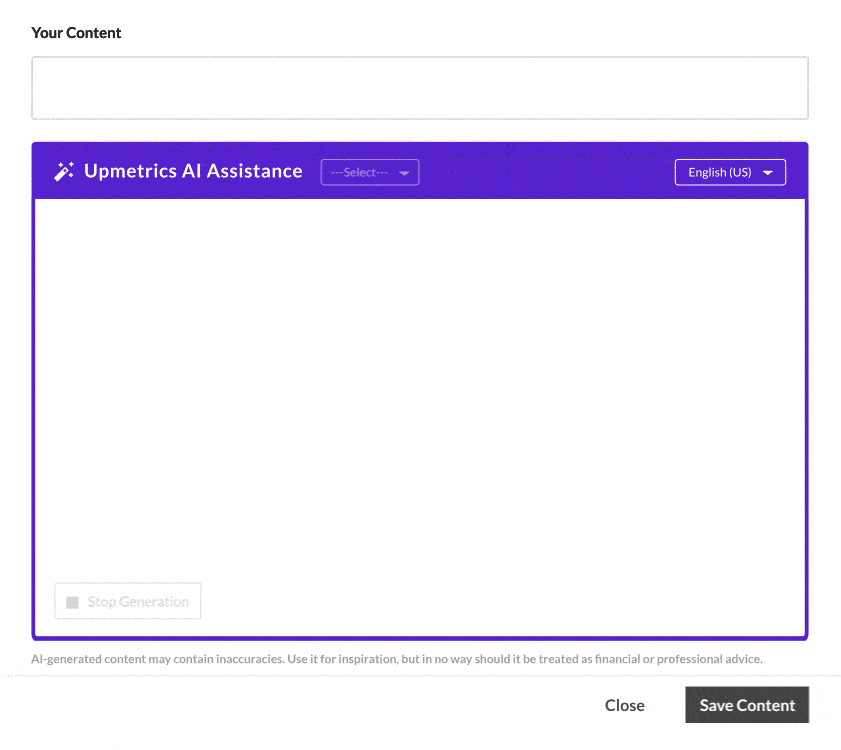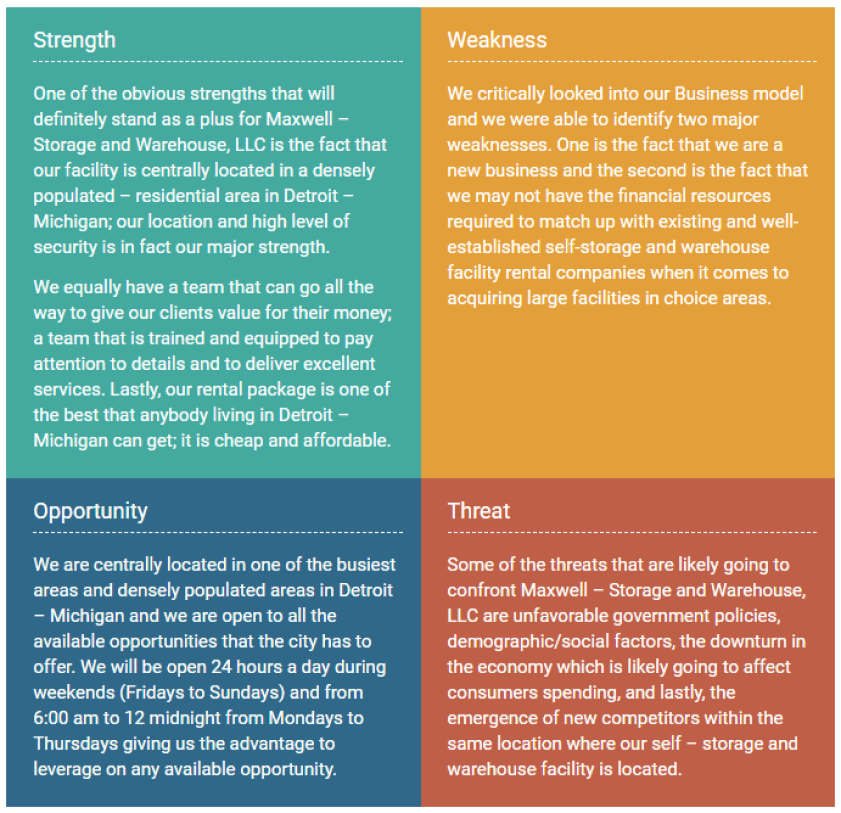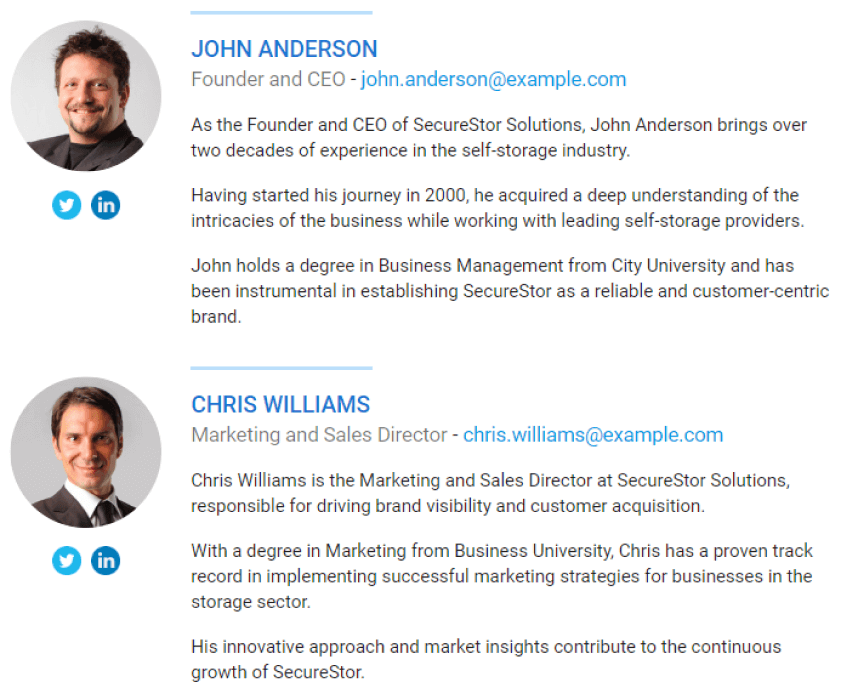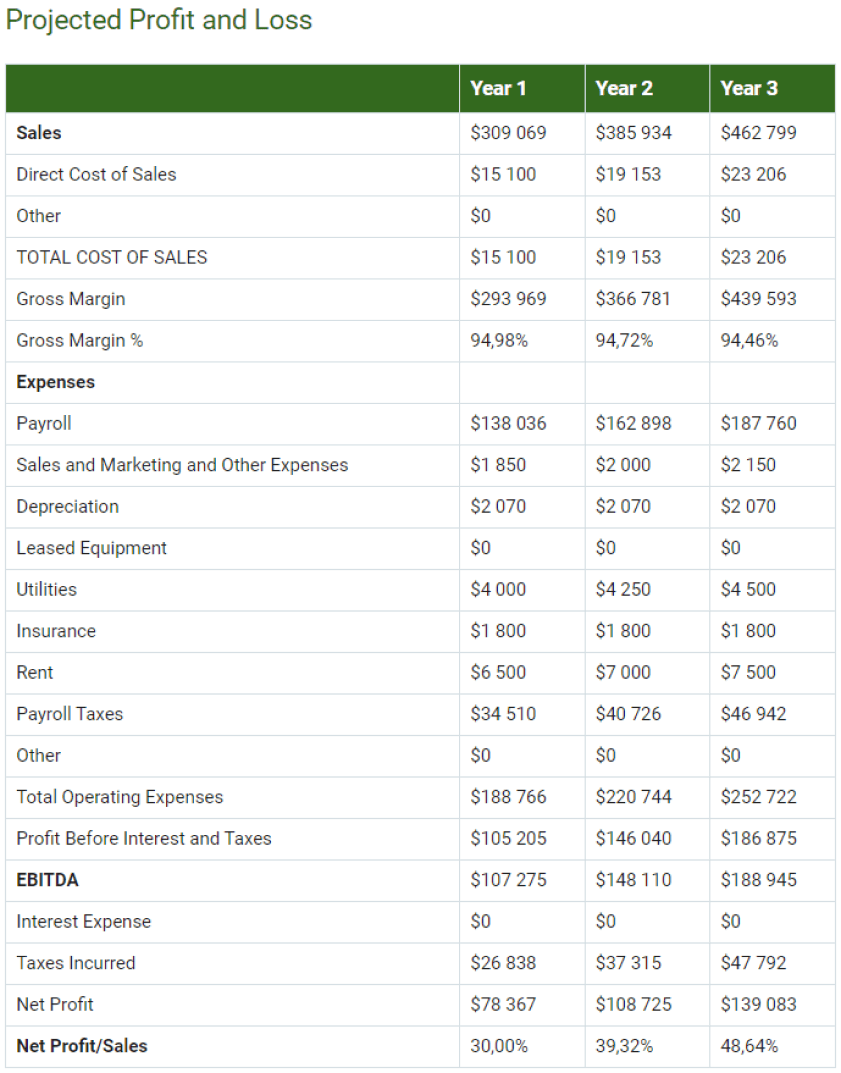Have you ever found yourself surrounded by a lot of stuff and wondered where to place those extra furniture or boxes of memories?
But you’re not alone; there are so many individuals who can’t get enough of all their belongings. And that’s where self-storage comes into the picture!
The self-storage facility stores people’s stuff by charging some rental fees. It offers a secure haven for your cherished items, from lockers to outdoor spaces.
Surprisingly, if you are planning to start a new self-storage or warehouse business, you will need a solid business plan for a successful business.
So, we have created this sample business plan for you to get a better idea about how a business plan should look and what details you have to include in your self-storage unit business plan.
But before diving right into a detailed business plan, let’s consider a few things you need to understand.
Things to Consider Before Writing a Self-Storage Business Plan
As per statistics, the global self-storage market is projected to reach an astonishing value of $71.37 billion by 2027, with a CAGR of 5.65% from 2021 to 2027.
The primary reason for this rapid market growth is due to the increasing need for commercial and residential storage.
The self-storage companies provide secure spaces and various storage unit types such as containers, compartments, lockers, and outdoor spaces. So that, customers can safely store and retrieve their belongings anytime.
In fact, the self-storage industry has been the fastest-growing sector in commercial real estate since it started in the 1960s.
And the cool part is that self-storage unit operators don’t need a ton of staff, utilities, or maintenance. So, it makes sure that your self-storage facilities earn substantial profits.
Now that you know a little about the industry, it’s time to discover what to include in your self-storage business plan.
What to Include in Your Self Storage Business Plan?
1. Executive Summary
An executive summary is a brief overview of your entire business plan. Although it is the first section of the plan, entrepreneurs write it at the last when the whole plan is ready.
This section highlights the most important points, from business concept and mission-vision statements to financial outlook.
You may start this section with a compelling introduction to your self-storage business, including the business name, owners, location, and type of business you are running.
Give a brief overview of your market opportunity, service offerings, management team, and marketing strategies. Highlight financial projections if you’re seeking funding.
Most of the readers will go through the executive summary before making a judgment. So, make sure to keep it clear, concise, and engaging to grab readers’ attention.
Say goodbye to boring templates
Build your business plan faster and easier with AI
Plans starting from $14/month

2. Company Overview
The company overview section is a detailed description of your business, including the business idea, name, location, future goals, history, and other business-related facts.
This section helps you provide an in-depth understanding of your business, introducing and positioning your business as an ideal solution for your target audience. So, write it in a clear and concise yet impactful way.
First, you may discuss the basic details of your storage facility and what type of storage business you are operating. It could be a warehouse, portable containers, vehicle storage, lockers, climate-controlled storage, etc.
Have a look at Maxwell’s business introduction written using Upmetrics AI Assistant:

Apart from that, your company analysis section should include the following information:
- Vision and mission statements
- Business legal structure(Sole proprietorship, partnership, LLC, or corporation)
- History and background of storage business (if any)
- Owners’ names with qualifications
- Future business goals(Short-term or long-term)
- Milestones you have accomplished(number of self-storage units occupied, number of referrals, contract renewals, etc.)
3. Industry Analysis
The industry analysis section is an overview of the specific industry and market. It supports you in a better understanding of the external business environment.
While it seems unnecessary, it helps you develop strategies that maximize business opportunities and lower potential risks.
By doing thorough research, you may learn a lot about the storage industry and the market that you will serve. And this will show your readers that you are an industry expert.
So, start this section with a quick introduction to the self-storage industry. Describe the self-storage business in terms of size(in dollars) and mention whether the market is falling or growing in the USA.
You may conduct detailed market research to examine previous trends and market growth potential. This helps you identify the top competitors in the industry and their market shares.
Don’t forget to highlight a few factors that affect the industry, including regulatory rules, market trends, and other businesses’ competitive activities.
4. Customer Analysis
The customer analysis section of your self-storage business plan provides the details of the customers you serve or intend to serve.
It helps you identify your target customers, evaluate their needs, and explain how your services cater to them.
You may consider some examples of customer segments, such as business owners, families, individuals who are relocating, and students. Try to break your target market in terms of their psychographic and demographic profiles.
For a demographic profile, you should include details of the age, gender, location, and income level of the customers. Most self-storage facilities mainly serve customers staying in the same town or city.
You may explain the target customers’ wants and needs for demographic profiles. If you properly understand these demands, it will help you attract and retain customers.
You may refer to the below example written from Upmetrics’ self-storage business plan:
Target Market of Maxwell – Storage and Warehouse
We are aware of the fact that for any business to thrive so well in profit, it has to first and foremost define its market. The target market for self-storage and warehouse facilities cuts across people from different walks of life.
The fact that people need a secure place to keep their properties for a short period of time makes the self-storage and warehouse rental business a thriving and growing business.
Maxwell – Storage and Warehouse, LLC will work towards providing services, facilities, and an environment that will help us reach out to our target market. These are the categories of people that we intend to market our self–storage and warehouse facility to:
- Working Class Adults / Corporate Executives
- Sports Clubs (soccer team, athletics team, and choreographers et al)
- College Students / Schools
- Community and Corporate organization
- Business People / Entrepreneurs
- Government Officials
- Religious centers (Crusade Teams)
- Merchants, Importers, and manufacturers
- Sports Men and Women
- Construction companies
5. Competitive Analysis
Competitive analysis is essential to recognize key competitors within the industry, including direct and indirect competitors.
Also, this section will help you know your storage business’s unique selling propositions along with market positioning.
You may start by identifying direct and indirect competitors & other alternative self-storage companies in the industry.
Direct competitors can be other self-storage facilities that provide the same self-storage services as yours. While indirect competitors can be other options or storage businesses with their own storage space.
After specifying such competition, you need to focus more on your direct competitors. Such self-storage facilities are the most threatening to your self-storage company.
Describe an overview of their businesses. Describe their strengths & weaknesses and try to find out key things like:
- Who(type of customers) do they serve?
- What type of self-storage services do they provide?
- What are USPs, including their quality service?
- What is their pricing strategy(medium or low)?
- What do they need to improve as per their customers?
After conducting the above analysis, understand the areas of competitive advantage. For instance, consider your superior self-storage services, unique offerings, better prices, and excellent customer service.
You may perform a SWOT analysis like below to get your storage business’s strong points.

6. Marketing Plan
Your business’s marketing plan provides a detailed outlook of sales strategies and promotional techniques you will use to reach your target audience.
It will help you streamline your marketing efforts and create impactful marketing campaigns to acquire new customers and retain existing ones.
Here are some of the sales and marketing strategies for your self-storage company:
Unique Selling Propositions(USPs)
Specify the USPs that sets your self-storage facility apart from other self-storage businesses. Emphasize a few aspects such as quality services, security features, competitive pricing, etc.
Social Media Marketing
For a successful self-storage business, social media engagement can be very helpful. Use popular social media platforms to target specific audiences. Create visually appealing ads and content to drive traffic.
Partnerships
Establish collaborations with local businesses to promote your storage facilities and generate referrals. This can benefit your self-storage company and local partners.
Website and online reservations
Having a website can establish a strong, professional brand and help you reach a wider audience. Showcase all your storage services on the website and consider the online reservation procedure.
Loyalty programs and special offers
Try to retain existing customers with the help of loyalty programs, special offers, and referral incentives. This can encourage your customers to refer new clients.
7. Operations Plan
The operations plan chapter outlines the daily processes and activities centered on achieving the business objectives mentioned in the earlier sections.
A detailed operations plan helps you and your team define responsibilities, daily tasks, and short-term goals you need to accomplish, keeping track of your long-term objectives.
So, briefly discuss operational planning, highlight how it directly impacts the quality of services, and pique the reader’s interest.
Here are a few key elements to add to this section:
Staffing & Training
Describe your staffing plan, prioritize training programs, and foster a collaborative work environment for smooth administrative processes and excellent customer service.
Facility Management
Consider including security systems to provide the highest level of security for storage units. Also, mention regular maintenance checks to keep the condition and cleanliness of the facility.
Technology and Software
Describe the technology and software you use to easily reserve, access, and manage storage units. This will enhance your customer service and contribute to effective business operations.
8. Management Team
As the name suggests, the management team section introduces the owners and key managers, along with their roles & responsibilities, qualifications, work experience, and compensation plan.
A strong management team is essential to weigh authority and helps potential investors to be confident about your storage company’s idea and vision.
You may start this section with an introduction of the storage owner and team members, including the facility manager, admin & HR manager, sales & marketing executive, accountant, customer care executive, or front desk officer.
Highlight their responsibilities, industry experience, educational background, and skills that can benefit your business. For a better understanding, you may refer to the below example:

You might include an organizational structure that depicts the reporting lines and the flow of the decision-making hierarchy. Also, discuss the compensation plan for each individual, part of your management.
If you have any advisory board members, mention them and emphasize their experience in managing self-storage companies or small businesses.
9. Financial Plan
The financial plan is the most important and demanding aspect of business planning.
When it comes to convincing potential investors and banks to invest in your business or lend money, a financial plan is one of the crucial factors.
This section of your plan describes your self-storage facility’s financial information and how it will achieve its financial goals or how much revenue potential it has.
Here are a few essential elements and financial statements you must add or provide while making a financial plan:
Income Statement
An income statement is generally called a profit and loss(P&L) statement. It defines the revenue and then deducts your self-storage operating expenses to show your gross profitability.
For this, you have to make practical assumptions that help you measure the actual profit margin of your business. Here’s an example of a projected profit and loss statement for 3 years:

Balance Sheet
A balance sheet helps you show your assets and liabilities. While it includes a lot of information, you may simplify it to highlight the most important details, like equity, goodwill, debt ratio, or other intangible assets.
Cash Flow Statement
Your cash flow statement helps you determine how much money you need to start a new self-storage business or grow an existing facility. It also makes sure that you never run out of money.
Once your business is started, you should maintain these cash flow projections even for certain months before you start making profits.
Well, in most cases, you earn profits but still face financial problems that could lead you to bankruptcy. So, you will need proper cash flow planning to avoid such possibilities.
Funding Sources for Your Self-Storage Business
You can access different funding sources to support your self-storage startup or expansion efforts. Here are some common sources to get funding from:
Bootstrapping
Many entrepreneurs use personal savings as initial capital for starting a self-storage business without attracting investments or borrowing money from banks.
Family and friends
After deciding how much money you’ll need to start a business, you may ask family & friends to invest in your self-storage business. Show a solid business plan to the interested ones and assure them that they will make a profit.
Bank loans
The most common source of funding is to cover startup costs and self-storage facility expenses. However, banks will ask for a professional self-storage business plan to make sure that you’ll be able to pay money back with interest.
Investors and partnerships
Bring in some external capital by seeking investors or partnering with individuals or businesses interested in your self-storage industry.
Apart from the above, you may explore other funding sources for your self-storage business:
- Crowdfunding
- Small Business Administration(SBA) loans
- Private equity & venture capital
- Grants and subsidies
- Real Estate Investment Trusts(REITs)
Download a sample self-storage business plan
Are you ready to start writing your self-storage business plan? Here you go; download our free self-storage business plan pdf to get started.
It’s a modern business plan template specifically designed for your storage business. Use this sample business plan as a guide for creating your own plan.
Import data into your editor and start writing!
The Quickest Way to turn a Business Idea into a Business Plan
Fill-in-the-blanks and automatic financials make it easy.
Start Preparing Your Business Plan with Upmetrics
No doubt, creating a comprehensive business plan is daunting; but it’s a lot smoother with the help of Upmetrics! It offers easy-to-follow steps, 400+ sample business plans, and AI support that will serve you perfectly.
If you are not good enough at finances, our financial forecasting tool will help you create realistic financial forecasts for 3 or more years.
Whether you’re venturing into a new business or aiming for expansion, Upmetrics provides valuable resources to create successful, professional business plans.
So, what are you waiting for; start planning now!




